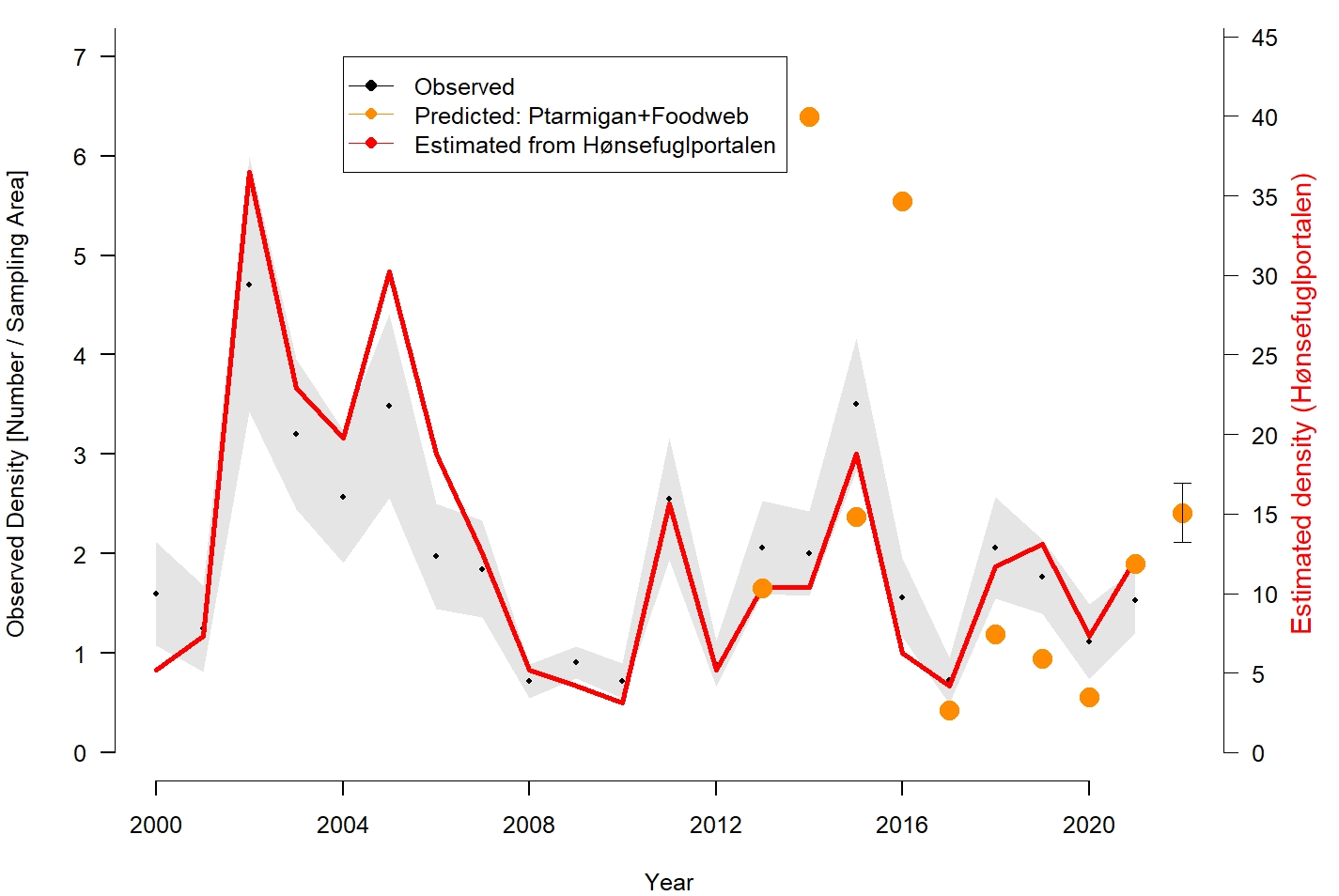COAT has modeled the population fluctuations of willow ptarmigan in Finnmark and looked at what influences changes in the population. The modeling is the result of a collaboration between COAT and several stakeholders, including the landowner Finnmarkseiendommen (FeFo).
Willow ptarmigan. Photo: Geir Vie
The stakeholders wanted the models to be used to predict the ptarmigan populations one and a half months before the annual line-transect surveys, in order to be able to plan the year's hunting, quotas and management in advance. COAT has therefore, now for the second year in a row, made model-based predictions before this year's ptarmigan surveys. To our satisfaction, the results of FeFo's assessments last year largely corresponded to the predictions that were made. Hence, we are excited to see how this years predictions compare with the result from FeFo’s assessment in the end of august.
This year’s model-based predictions

The figure shows the estimated density of the willow ptarmigan population in Finnmark in the period 2000 - 2021 (red line, estimates from Hønsefuglportalen) compared with the predictions from COAT's food web model in the last 10 years (orange dots). Hence, the last orange dot (i.e. for 2022) is our prediction for this years average ptarmigan density on the Finnmark estate (FeFo), 1.5 months prior to the ptarmigan surveys in the end of august. Note that our model predicts the average observed number of ptarmigan per km2, while the assessment result (red line) is given as the estimated number of ptarmigan per km2 from a model that corrects for detectability (i.e. a distance model).
This year's predictions (figure above) show that we expected a further increase in ptarmigan density this year. This was because it was a relatively normal start to the winter last autumn in addition to a quite hot period in July, when the chicks were newly hatched and a late winter with slightly more carcasses than normal. In addition, an increase in small rodent densities (increase phase) has likely resulted in reduced predation on ground breeding birds in the system. A caveat one should take is that the sum of all these effects in the last year probably does not work purely additive to each other, and that the increase, compared to previous similar increase years in Finnmark, seems to be somewhat less than what has been predicted. Moreover, how the availability of small rodents evolve during the summer, would impact the predation pressure on ptarmigan chicks and thereby the density estimated in the end of august.